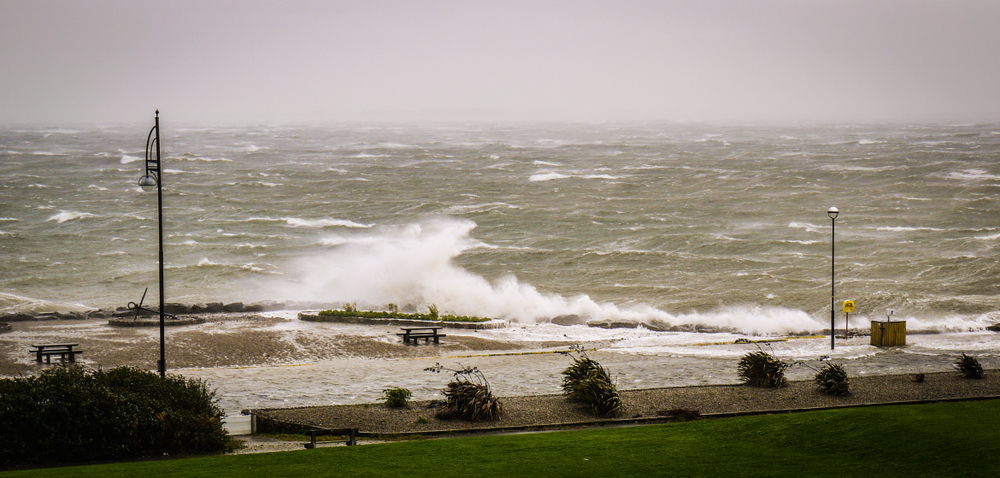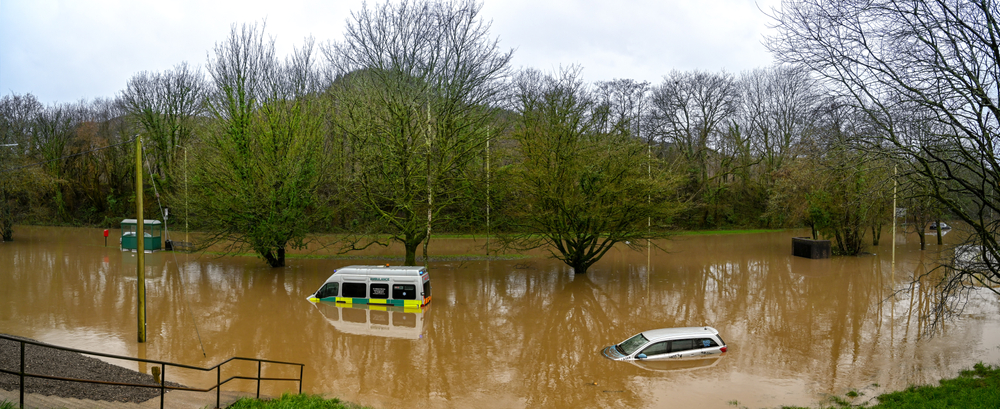
Climate change is regularly cited as the greatest challenge of our times – an existential threat to life on this planet. More than ever, we understand the source of the problem and the likely consequences of inaction. We also have the scientific knowledge and means to do something about it. So, why do we drag our feet and fail to reduce emissions in a meaningful way?(1)
Politicians have grown fond of referring to the climate “emergency,” but when Greta Thunberg says that we should act like our house is on fire, few jump out of their seats to act. According to insights from economics and psychology, our responses to this emergency are slowed by a tricky combination of misaligned incentives, how we understand and value delayed risks and our struggles to change our established behaviours. Here, we provide a taste of the research that helps explain why, despite increasing concern and awareness of climate change, we, as a society, have so far been unable to make greater progress tackling this existential challenge.
Proximity is key.
While most of us are aware of ways to reduce energy consumption in our food, travel and home management, this awareness does not always translate into action. We know what we can do, but we are not doing it. Why? From a psychological perspective, there are many reasons why we fail to reduce our carbon emissions. Proximity, temporality and habit are three of the numerous factors at play. The consequences of our actions in response to climate change can be difficult to visualise or comprehend. Doomsday scenarios seem like science fiction, implausible and unlikely. The distant and ambiguous prospect of an uninhabitable planet (2) fails to motivate a change in behaviour, evoking either a paralysing dread or dismissal as fantasy. Recent scientific studies demonstrating the role of global warming in fuelling extreme weather events mark a shift in our perception of climate risk. From storms to floods, heat waves and wildfires, scientists are bringing the reality of climate change home through local case studies. The proximity of these local events means they have a greater potential to impact on our behaviour, but much work remains to be done to rigorously quantify these risks at a local level – and to understand how impacted communities perceive and value change.

Time affects value.
Temporality is another key factor. Most energy usage decisions are intertemporal choices. In other words, choices which bring about consequences at different times. When we must choose between one option with short-term consequences, and another with longer-term consequences, short-term consequences exert a stronger influence. Then there is habit; when choosing between a new activity and a familiar one, the latter option tends to prevail. To use a physical metaphor, there is a momentum to the things we currently do and an inertia to change.
As identified by Loewenstein and Thaler (1989), energy use decisions are a classic example of intertemporal choice. Energy use is immediately beneficial, but the cost of energy use is delayed until consumers receive the bill. Environmental costs are deferred even longer than this. An awareness of the effects of delay on preference has existed since the beginnings of economics; such conflicts being noted by Adam Smith in The Theory of Moral Sentiments as early as 1759. Originally, Samuelson and others suggested that this might operate as a compound discount in how an individual values an option (e.g., 10% value loss per day of delay in benefit).
This idea correlates short delays of positive consequences with a sharp loss in perceived value – with the strength of the loss reducing over time (capturing some of the nonlinearity of the effect). Behavioural research even suggests that individuals discount consequences at short delays more steeply than such compound (exponential) discounts would predict, while discounting later rewards less than expected. Imagine you are presented with two rewards: €11 in 31 days, or €10 in 30. When both options are distant, individuals will choose the later and larger of the two (e.g., €11 in 31 days over €10 in 30), but this preference is reversed as the rewards get closer (€10 today over €11 tomorrow). Discounting has also become a highly debated topic within the economics of climate change, with disagreements over the appropriate way to treat values occurring in the distant future. This has a big bearing on how we evaluate the potential damages of climate change.
Alongside immediate benefits, each energy use decision results in a very small cost, further increasing the strength of the discounting effect. The degree to which we discount future rewards/losses is sensitive to the magnitude of those costs/outcomes (Kirby and Marakovi ́c, 1996; Johnson and Bickel, 2002). Smaller outcomes are discounted more strongly than larger outcomes. When it comes to energy consumption, future rewards of efficient energy decisions are often small within an individual’s lifetime, encouraging steeper discounting and more impulsive behaviour. For the person choosing, the future reward is simply not worth it, and thus, our energy usage patterns may resist change. Consider how easily we might pay for a daily cup of coffee at work (“it’s only €2”), but this behaviour will cost us approximately €400 a year (5 days a week, 40 weeks of work). We would not easily part with €400, but we think little of €2 a day.

This map shows areas of Galway that would likely be inundated for a scenario with 10m of sea level rise. While this may be an extreme scenario, it has been suggested that for business as usual emissions (without mitigation) sea levels could rise by more than 10m by the year 2300. It is illustrative of what may be at stake even at a local level, if we fail to act. Source: Climate Central. Visit here to see what different parts of the world will look like when various amounts of sea level rise.
Changing behaviour is hard.
We know that changing behaviour is hard. We all remember the new year’s resolutions that lost momentum – the neglected exercise class or diet plan. When we have committed to a behaviour for an extended period, it can be hard to even imagine doing something different. For each choice we make, there are psychological, social and environmental influences supporting that behaviour – influences that do not simply evaporate when we decide to change. Even when we do disrupt our habits, they can always return.
While many of us value the environment and feel a duty to change, there are other incentives that do not align with this behaviour. Even when a change confers substantial personal benefits, we still struggle to break habits. These challenges are compounded when the change is not in our personal self-interest. This is exactly what makes climate change such a difficult problem to solve. It is a classic example of a market failure, resulting from what economists call a negative externality. (3)
Adam Smith, in describing how markets work to allocate resources, famously said that it is “not from the benevolence of the butcher, the brewer, or the baker that we expect our dinner, but from their regard to their own interest.” The market mechanism allocates resources through the magic of the “invisible hand” – the interaction of supply and demand. Supply reflects the interests and costs of producers; demand represents the interests and budgets of consumers. With well-functioning markets, this interaction can produce good social outcomes, without any need for government intervention. But markets do not always function well and consequently, do not always allocate resources efficiently or produce socially optimal outcomes. We call these market failures. Financial bubbles and crises; the under-provision of public goods like public lighting, basic science and research (hence why governments pay university researcher salaries); and the overproduction of pollution are all examples. Climate change has been dubbed as the greatest market failure in history. Why? Because it is not in individuals’ (or firms’) private self-interest to avoid pollution, when to do so is to pay a cost or give up an otherwise beneficial behaviour.
Incentives are necessary.
In the language of economics, carbon taxes – a form of Pigouvian tax – are designed to re-align incentives, to “internalise the externality.” The value of the tax is set equal to the marginal social cost of climate change. In other words, the tax should compensate society for the damage set to occur as a result of adding more carbon to the atmosphere. While compensation may be a benefit, the primary aim of carbon tax is to induce changes in behaviour by creating a price signal.
A widely applied carbon tax (equal to the marginal social cost of a tonne of CO2/equivalent) levels the playing field by pricing according to true social costs – such that “greener” products and services compete with more greenhouse-gas intensive ones. Here, an additional benefit is that the decision is simplified for consumers. Imagine you’re deciding between an organic avocado grown on the other side of the world and a pack of Irish-made pork rashers. You are comparing two products with a variety of environmental and moral characteristics, while also considering price and other features. It is well established (e.g., Lunn et al, 2020) that decision makers do not effectively weigh and combine the attributes of their options, often “dumping” attributes to simplify decisions. (4) If the longer-term costs of these attributes are already incorporated into the price, consumers need not engage in these complex evaluations, nor the intertemporal choice problem noted above.
The price signal aims to change not only consumers’, but also producers’ behaviour. A strong and consistent carbon price will likely induce innovation, expanding the choice set of climate-friendly products. Still, carbon taxes alone are not necessarily a silver bullet. For one thing, the burden of carbon taxes typically falls disproportionately on those on lower incomes who, despite having much smaller carbon footprints than higher income individuals, still spend a greater share of their household budgets on carbon intensive products and services. This issue could potentially be addressed with a rebate scheme (e.g., in the form of additional financial support for those at risk of fuel poverty, funded by tax revenues).
Once we align all incentives to support a new behaviour, it is still not guaranteed that we can change. New behaviours depend too on skills (e.g., organisational, cognitive) and resources (e.g., time). For example, our health psychologists at NUI Galway have effectively used the Capability-Opportunity-Motivation Behaviour (COM-B) model proposed by Michie et al (5) to understand how we can develop and encourage health behaviours. Even if we were paid to go to the gym, would we manage to get our gym clothes washed in time, to get the kids to school early enough, and so on? Incentivisation only works if an individual is able to do whatever is required to obtain the incentive. Otherwise, incentives can have perverse effects that undermine motivation, encourage avoidance of the incentiviser, and can even encourage individuals to forego their value-based motivations.

Climate Change is here and now.
In recent years, Ireland has been battered by a range of extreme weather events, from severe storms (6) and floods, to periods of drought. These extreme events are examples of what we can expect to see with increasing frequency given the heightened energy in our weather systems – a feature of climate change. While work is ongoing to attribute specific events to anthropogenic climate change, further work must be done to document the full toll these events exert on lives and finances. A toll which will only escalate in coming years.
Policy agendas both nationally and internationally now aim to create economic and social development plans that take account of climate risks. These plans need to be informed by a rigorous evidence base. This will involve characterising risks and impacts for different climate scenarios at a highly local level, and examining the overlap of climate risks with planning and economic development strategies. For Ireland, this interplay between climate change and economic development is most pronounced in relation to flood risk, particularly for our coastal towns and cities that are home to a large share of both population and economic activity in Ireland.
Currently, our understanding of future flood risk is limited. This is because the dynamics of flooding is complex, involving multiple compound mechanisms such as river flows, tide heights and storm surges, as they interact with local topography and the built environment. These technical challenges are further exacerbated by uncertainties around future climate projections. Understanding evolving local flood risk requires intensive numerical modelling. Models of this kind simulate high-res flood inundation under current conditions, and in a range of future climate scenarios.
Characterising risk is just the first step. If we want to inform flood risk management and climate adaptation policies, we need an idea of what we stand to lose at a local level. This involves estimations of cost and socio-economic impacts. Cost estimates must account for uncertainty, as well as more extreme scenarios or “tail-events,” which might be of concern to policymakers (e.g., Abadie et al. 2017, 2019, Weitzman 2009), and relevant to the design of flood defence schemes (McDermott 2016).
Even in constructing these complex models, we remain strongly dependent on assumptions about human response to risk. Internationally, high level projections of future flood costs (e.g. Hallegatte et al. 2013; Jongman et al. 2014) and evidence of growing exposure to flood risk (e.g. Lin, McDermott, Michaels 2021), emphasise the need to better understand the extent to which climate risks are incorporated into everyday decision making. The better informed we are of climate risks, the more likely they are to factor into decisions and ultimately, into large-scale adaptation to changing risk profiles. For example, in previous research, we found that flood risk shows up in Irish house prices only after the release of new information about the risk (Gillespie et al. 2020).
Our new EPA-funded research project integrates scientific risk assessments, with social science and behavioural analyses of costs, impacts and individual/community response. We are working to produce new evidence on climate risks, their potential impacts, and how they are valued and perceived. Climate change is here and now. We need to work together across disciplines to support the creation of more climate resilient communities in Ireland. The risks are literally on our doorstep, but as we’ve argued, awareness is only the first step. Action demands that risks be characterised, quantified, and communicated appropriately – and that people be facilitated to act.
Tom and Denis are both part of the research team for Climate Resilient Places, a new research project based at NUI Galway funded under the EPA Research Programme 2021-2030. The EPA Research Programme is a Government of Ireland initiative funded by the Department of the Environment, Climate and Communications.
Learn more about postgraduate courses in Consumer Psychology and Global Environmental Economics at NUI Galway.
(1) Global emissions in 2019, at some 60 giga-tonnes of CO2 equivalent (GtCO2e), were at their highest ever level, fully 54% higher than in 1990. See here. IPCC AR6, WGIII, SPM B1.1.
(2) The Uninhabitable Earth is the title of a recent international best-seller non-fiction book by David Wallace-Wells on consequences of unabated climate change.
(3) An externality is a situation where some third party is affected by a market transaction, receiving a benefit for which they do not have to pay (in the case of a positive externality) or incurring some cost for which they are not compensated (in the case of a negative externality).
(4) Lunn, P. D., Bohacek, M., McGowan, F. P., & Ní Choisdealbha, Á. (2020). The surplus identification task and limits to multiattribute consumer choice. Journal of Experimental Psychology: Applied, 26(2), 312.
(5) Michie, S., Van Stralen, M. M., & West, R. (2011). The behaviour change wheel: a new method for characterising and designing behaviour change interventions. Implementation science, 6(1), 1-12. Chicago.
(6) For example, Ophelia. See list of severe weather events here.
Profiles

Tom McDermott is the Galway University Foundation Lecturer in the Economics of Climate Change and Development at the J.E. Cairnes School of Business and Economics at NUI Galway, a founding member of the Centre for Economic Research on Inclusivity and Sustainability (CERIS) at the Whitaker Institute, and Director of the MSc Global Environmental Economics at NUI Galway. His research interests are at the intersection of environmental and development economics with a particular focus on economic and social impacts of extreme weather events such as floods, as well as how societies and economies adapt and respond to changing environmental risk. His latest research can be found here.

Dr Denis O’Hora, an experimental psychologist and behavioural scientist in the School of Psychology at the National University of Ireland Galway, is Director of the MSc in Consumer Psychology. In addition to working on the basic science of learning and decision making, he has spent the last 10 years supporting enhanced decision making in real-world settings. He is particularly interested in enabling rewarding and effective consumer interactions and developing human-centred solutions to safety, productivity and sustainability issues. He is Ireland’s national academic representative for Task 39 Quiet Wind Technology of the IEA Wind Technical Collaboration Programme and is working with Irish Green Labssustainability of research laboratories. At NUI Galway, he is an affiliate member of the Data Science Institute and a member of the Ryan Institute